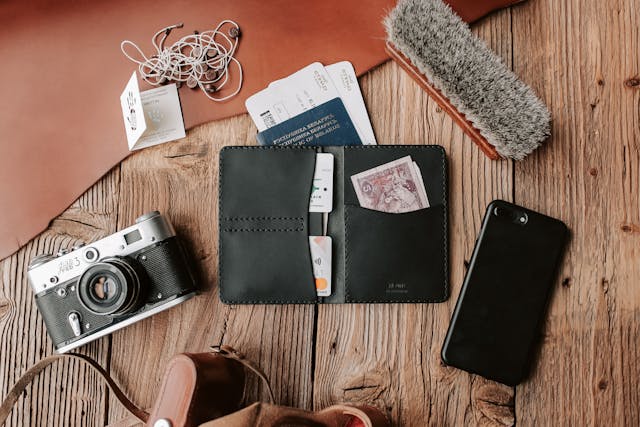Travel starts out simple: a ticket, a bag, maybe a loose plan. But hidden behind the excitement sits a less glamorous detail: money. Not just how much of it you have, but how it moves once you step outside your home country.
For many, this is where the smooth rhythm of a trip gets disrupted. Payments aren’t always straightforward. Currency conversions, blocked cards, strange fees that show up later on your bank statement. Each small issue takes a little shine off the adventure.
So let’s talk about the real side of travel payments. Not the glossy advice about “just use your card everywhere,” but the way people actually navigate money on the road.
The invisible stress of money abroad
Picture this. You’re standing in line at a bakery in Lisbon, you order your pastel de nata, you tap your card. Declined. You try again. Declined. The people behind you shift impatiently. Your card company has flagged the purchase as suspicious.
Not a disaster. But embarrassing, unnecessary, and a reminder that your money doesn’t always travel as easily as you do.
This happens more often than travelers admit. Add in ATM withdrawal fees, poor exchange rates, or cash-only vendors, and you start to see the pattern: payment isn’t just a background detail. It shapes your trip.
Even seasoned travelers can get caught. Carrying too much cash risks theft. Relying only on cards leaves you exposed to system failures. And some mobile wallets? They simply don’t work everywhere.
Why planning payments matters more now
Travel has shifted. People don’t just vacation anymore. They work remotely, they spend months abroad, they mix business with leisure. That means payment systems need to be flexible. A backpacker hopping between hostels has very different needs than a digital nomad renting long-term accommodation. Families want something else entirely: safety, predictability, and access to funds when kids are involved.
It’s why more travelers are starting to treat financial planning as part of the itinerary. The same way you’d research hotels or flights, you research how your wallet will behave in different corners of the world. And that’s where solutions designed specifically for international use come into focus: global payment solutions created for people constantly on the move.
They reduce friction. They give you access without nasty surprises. They cut down on the small leaks that drain money from trips. And perhaps most importantly: they provide peace of mind.
Stories from the road
Money mishaps aren’t rare. Ask any traveler and you’ll hear at least one.
- A Canadian student in Italy finds her card frozen after buying a train ticket, leaving her scrambling for Wi-Fi and customer service numbers.
- A business traveler in Tokyo realizes his hotel deposit has been “held” on his card for days, slashing his spending power.
- A couple in Morocco finds their mobile wallet doesn’t work, and the only ATM nearby charges a painful percentage for withdrawals.
None of these ruin the trip. But they shape it. And when they pile up, they take a mental toll.
The irony is: these issues aren’t about lack of money. They’re about access. The funds are there, just stuck behind digital walls, bank suspicion, or infrastructure gaps.
What a modern travel wallet should look like
So how do you prepare? The answer isn’t just one tool, but a mix. Think of it as layers of protection.
- Local cash: Always have some, even in card-friendly countries. It gets you through small purchases, markets, taxis.
- Primary card: A credit or debit with low international fees.
- Backup card: Separate account, ideally from a different provider.
- Digital wallet: For quick taps and peer-to-peer transfers.
- Emergency access: A way to receive funds quickly if everything else fails.
This blend keeps you covered whether you’re buying street food, paying for a hotel, or dealing with a lost card.
And yet, managing all this manually can be exhausting. That’s why travelers increasingly lean on financial services designed with global use in mind. The systems that integrate these layers into one structure, making travel money less about constant calculation and more about confidence.
The rise of digital nomads and payment shifts
The remote work wave added new pressure on traditional banking. Nomads don’t just need to pay—they need to get paid. And they need to do it across currencies.
Freelancers in Bali working for US companies, consultants hopping between co-working spaces in Mexico, creatives splitting time between Europe and Asia. Their financial needs stretch traditional banks to the breaking point.
That’s why flexible global accounts are more than convenient: they’re survival. Without them, a simple invoice becomes a week-long struggle of transfers, fees, and lost margins. With them, payments are near instant, conversion is fair, and everything sits in one place.
This shift is pushing travel payments into a new era. It’s not just about spending time abroad anymore. It’s about full financial ecosystems built for mobility.
Common mistakes travelers make with money
Even experienced travelers slip. Some errors repeat again and again:
- Relying on one card only.
- Ignoring local customs: some places simply don’t do cards.
- Overusing ATMs without checking fees.
- Forgetting to notify banks before traveling.
- Thinking digital wallets work everywhere.
These mistakes don’t ruin a trip, but they add friction. And that friction steals time, energy, and sometimes quite a bit of money.
A glimpse at the future of travel payments
The way money moves abroad will keep changing. Contactless is already standard in parts of Europe and Asia. Mobile peer-to-peer apps are spreading fast. Cryptocurrencies hover in the background, used in small communities but slowly inching into mainstream.
There’s also a rise in “all-in-one” solutions that merge currencies, accounts, and payment methods. Imagine a single wallet that adjusts automatically to your location, shields you from fraud, and offers the best exchange rate without you lifting a finger. That’s the direction things are heading.
And for travelers, it means less of the old dance with cash, cards, and conversions. More focus on the experience, less on the logistics.
Keeping the trip light
Travel is supposed to expand your mind, not your worries. The point of handling payments well isn’t about obsessing over every cent. It’s about stripping away distractions. So the hikes, the dinners, the long train rides aren’t interrupted by the nagging thought: “Will my card work here?”
A good wallet system—layered, adaptable, global—removes that noise. It turns money into what it should be on the road: a quiet support in the background.
Because the real currency of travel isn’t cash or digital tokens. It’s moments. And the fewer obstacles between you and them, the richer the trip feels.
What say you?
Thoughts on Navigating Payments on the Road?
Let’s hear it!








